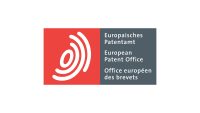Communication and Corporate Disclosure Policy of RecycLiCo Battery Materials (the “Company”)
Part 1 – GENERAL
1.1 Definitions. In this Policy, unless the context otherwise requires:
(a) “Applicable Laws” means all applicable rules, regulations, policies, notices, rulings, orders and legislation of any kind whatsoever of any government, regulatory authority or stock exchange having jurisdiction over the Company.
(b) “Board” means the Company’s board of directors.
(c) “CEO” means Chief Executive Officer.
(d) “FOFI” has the meaning ascribed to it in NI 51-102.
(e) “Forward-Looking Information” has the meaning ascribed to it in NI 51-102.
(f) “Manual” means the TSXV Corporate Finance Manual.
(g) “Material Information” has the meaning ascribed to it in the Manual.
(h) “NI” means National Instrument. (i) “TSXV” means TSX Venture Exchange.
1.2 Application. This Policy applies to all directors, officers, employees and agents of the Company.
1.3 Administration. The Board is responsible for the administration of this Policy, which is to be distributed to any person to whom the Policy applies. The Board shall review and update this Policy every two years or sooner if the need arises.
1.4 Objectives. This Policy aims to:
(a) ensure the Company’s compliance with Canadian securities law and regulations, as well as the rules and policies of applicable stock exchanges with continuous disclosure obligations and restrictions on insider trading;
(b) confirm in writing the Company’s disclosure policies, guidelines and procedures; and
(c) educate all persons to whom this Policy applies with respect to the principles of continuous disclose obligation.
1.5 Consequences of Non-Compliance. Any person to whom this Policy applies will face internal disciplinary action for failing to comply with this Policy, and such disciplinary measure may include termination of employment or consulting arrangements without notice. The Company will also report the non-compliant person to the TSXV and/or the B.C. Securities Commission if the non-compliant act is serious enough to warrant regulatory attention.
Part 2 – MATERIAL INFORMATION
2.1 Required Understanding. The Board and executive officers of the Company must read and follow NI 51-201 [Disclosure Standards] and Policy 3.3 and Appendix 3B of the Manual.
2.2 Determination of Material Information. The CEO or President, in consultation with the Board and the Company’s counsel, shall determine whether a piece of information relating to the Company constitutes Material Information. In making this determination, the participants should review and consider Part IV of NI 51-201. If there is any doubt about whether or not information is material, the Company must err on the side of caution by deciding that the information is material.
2.3 Confidentiality of Material Information. Until its disclosure to the public, Material Information must be kept strictly confidential.
2.4 Disclosure of Material Information. Any Material Information must be disclosed immediately, or as soon as practicable, with a news release, to be followed by the filing of the news release and a Material Change Report on SEDAR. If recommended by the Company’s legal counsel, the Company shall pre‐clear the news release with IIROC before its dissemination.
Part 3 – CONFIDENTIALITY
3.1 Maintaining Confidentiality. If the Board decides that early disclosure Material Information would be harmful to the Company, and that the Material Information is to be kept confidential for a short period of time before disclosure, the Company must:
(a) limit the number of people with access to such confidential information;
(b) lock up physical documents and restrict access to digital data with passwords;
(c) ensure that confidential documents cannot be accessed through technology such as shared servers;
(d) instruct all staff about the need to keep certain information confidential, and to not discuss confidential information where they may be overheard; and
(e) remind staff about the Company’s policies on blackout periods and insider trading.
Part 4 – FORWARD-LOOKING INFORMATION
4.1 Compliance. The Company must comply with all Applicable Laws, including but not limited to NI 51-102, if it chooses to include Forward-Looking Information or FOFI in its communications. In particular:
(a) Forward‐Looking Information must be clearly identified as such in the communication, along with (i) disclosure of all material assumptions underpinning the Forward‐Looking Information, and (ii) appropriate cautions and warnings to the reader or listener of the risks and uncertainties that come with Forward-Looking Information;
(b) all Forward‐Looking Information must be accompanied by a statement that disclaims the Company’s intention or obligation to update the forward‐looking information, except as required by law;
(c) at the beginning of any conference call or presentation, the Company’s representative shall make a statement that Forward‐Looking Information may be discussed; and
(d) if the Company has issued a forecast or projection in connection with an offering document pursuant to applicable securities laws, the Company shall update that forecast or projection as required by applicable securities laws.
4.2 FOFI. FOFI should be kept to a minimum, and only disclosed in accordance with Applicable Laws. If FOFI is used, it should be carefully monitored and updated if required.
Part 5 – COMMUNICATIONS
5.1 Marketing Materials. Any marketing materials (including but not limited to advertisements, brochures, fact sheets, newsletters, audio-visual presentations and social media postings) must be first approved by the President or CEO, who shall ensure that the materials comply with NI 51-201, as well as Policy 3.3 and Appendix 3B of the Manual.
5.2 Website Content. Materials posted to the Company’s website must be reviewed and approved by the CEO in the same way that other communications are vetted under this Policy. The Company shall designate a staff member to regularly review and update or correct the information posted on the Company’s website. All Material Information on the Company’s website should show the date it was posted or modified. Outdated information should be moved to an archive on the website.
5.3 Internet Chat Rooms and Electronic Bulletin Boards. No director, officer, or employee of the Company shall participate in any internet chat room, newsgroup discussion or electronic bulletin board on matters relating to the business, affairs or securities of the Company.
5.4 Use of Communication Systems. The Company’s communications systems belong to the Company, and may be used by directors, officers and employees only for legitimate corporate purposes. A person’s use of the communications systems constitutes an irrevocable consent by such person to the monitoring and disclosure of his or her system use and data and an agreement to comply with this Policy. The Company reserves the right to restrict use of its communications systems for non- corporate purposes.
Part 6 – INTERACTIONS WITH EXTERNAL PARTIES
6.1 General. In communicating with shareholders, potential investors, conference attendees, analysts, market professionals and the media, the following practices must be avoided: (a) providing any Material Information that has not been disclosed; (b) making selective disclosure; (c) making Forward-Looking Statements without identifying them as such.
6.2 Conference Calls. The Company shall announce the date and time of any conference call in a news release and on the Company’s website. An audio recording of the conference call shall be made available by either telephone or through an internet webcast for a limited time period thereafter and the recording should be kept as part of the Company’s disclosure record.
6.3 Media, Analyst Meetings and Industry Conferences. Only senior Company executives, such as the President, CEO or CFO, should be interviewed by analysts or the media, or present at industry conferences. If possible, statements and responses to anticipated questions should be scripted in advance and reviewed by the Board or the Company’s legal counsel. After the interview or presentation, another Company executive should review transcripts (if available) of the conference call, meeting or presentation to see if any Material Information was inadvertently disclosed.
6.4 Analyst Reports, Earning Estimates. The Company shall not:
(a) express comfort, provide guidance or generally comment on draft analyst reports, financial models or earnings estimates for the Company, except to confirm already-disclosed Material Information or information that is not Material Information;
(b) distribute any analyst report to the public (including posting on the Company website) or to employees, except the Company may circulate an analyst report to the Board, senior managers, credit agencies and professional advisors in order to assist them in monitoring communications about the Company.
If the Company elects to post to its website or otherwise publish the names of analysts who cover the Company and/or their recommendations, the names and/or recommendations of all analysts who cover the Company (whether positively or otherwise) should be similarly posted or published.
6.5 Earnings Announcements. Where feasible, the Company shall issue its earnings news release concurrently with the filing of its quarterly or annual financial statements, in order to give the public a more complete financial picture.
Part 7 – DEALING WITH UNINTENTIONAL DISCLOSURE & RUMOURS
7.1 Unintentional Disclosure. If the Company makes an unintentional selective disclosure of Material Information, it should immediately contact IIROC to request that trading be halted pending the issuance of a news release and to notify those parties that have knowledge of the undisclosed information that the information is material and that it has not been generally disclosed. A news release to announce the Material Information should then be disseminated.
7.2 Rumours & Leaks. The Company’s policy is to neither confirm nor deny rumours, except when required by the TSXV to make clarifying statements where trading in the Company’s securities appears to be heavily influenced by rumours. Otherwise, the Company’s designated spokesperson should always state that it is the Company’s policy not to comment on rumours. Notwithstanding the foregoing, if Material Information has been leaked and appears to be affecting trading activity in the Company’s securities, the Company must contact IIROC to discuss whether trading in the Company’s securities should be halted pending the issuance of a news release disclosing the Material Information.
This Policy was approved and adopted by the Board on December 24, 2020.


